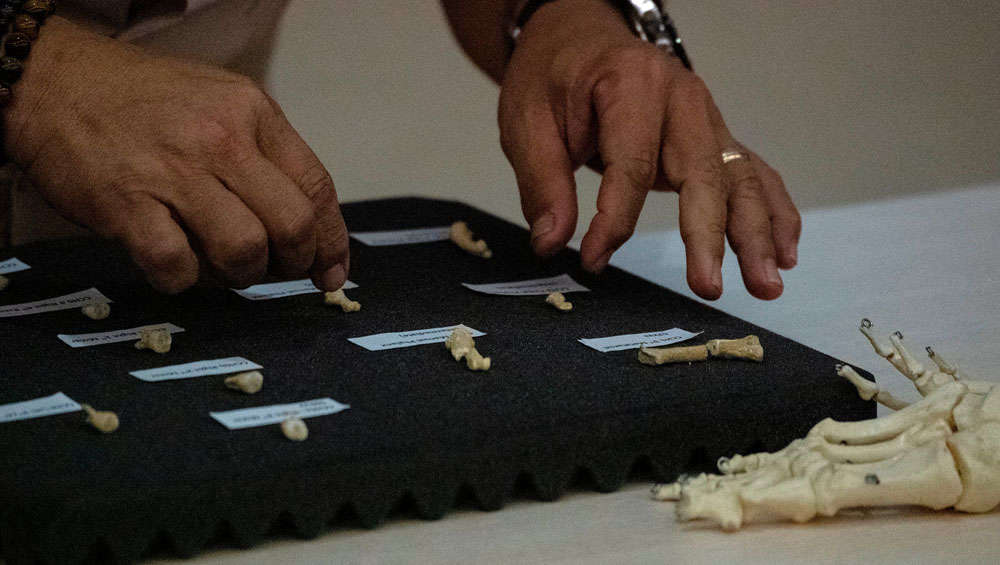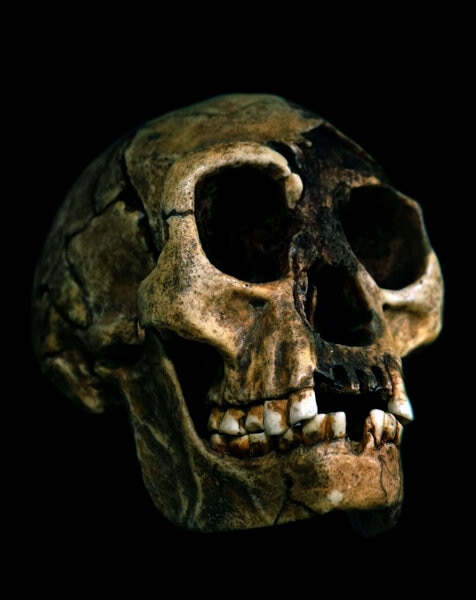Create a free profile to get unlimited access to exclusive videos, sweepstakes, and more!
Hobbits (sort of) existed, and they might be related to us

Bilbo Baggins and other hobbits who demand second breakfast and have exceptional feet only exist in the fictional realm of Middle-Earth, but there are hominids in our past which did not stand much taller than Bilbo or any of his brethren.
The prehistoric human species Homo floriensis and Homo luzonensis could be those "hobbit humans." Found in Island Southeast Asia, they were given this nickname because of their extraordinarily small size, with the tallest among them standing only about 3’7”. New research now suggests that while there was no interbreeding between these species and Homo sapiens, their existence could have overlapped with the arrival of Neanderthals and Denisovans, our closest ancient relatives, to the islands. These two species did interbreed with modern humans.
Over 400 modern human genomes were analyzed in an effort to better understand who interbred with whom. It is even possible that the diminutive “hobbit humans” could be, or at least be related to, the elusive “southern Denisovans” that scientists have been searching for.
“We do not know for sure if they interbred with Denisovans. They seem to be in the right place at the right time to represent southern Denisovans, which our study confirms interbred with modern humans,” researcher João Texeira, who led a study recently published in Nature Ecology & Evolution, told SYFY WIRE. “What we do know is that they did not interbreed with modern humans.”
How these human ancestors got to be so small remains a mystery for now, but miniaturization of species isolated on islands is not uncommon. Limited amounts of food and other resources can sometimes mean that survival of the fittest does not always favor those who are larger and fiercer. It can end up being the smaller individuals, who need less energy and find it easier to hide from predators, who survive. This adaptation often ensures the species goes on. What is also known is that species endemic to islands can rapidly evolve morphological changes.
There is also speculation that both H. floriensis and H. luzonensis, who arrived in Island Southeast Asia around 50,000-60,000 years ago, stayed small because their populations were insular and the genes that made them that size became dominant among them. Neither possibility — or any other reason — has been proven yet.
“If the occupation of these islands prior [to] modern human arrival was continuous, then that process could have taken hundreds of thousands of years,” Texeira said. “But it is possible that the later forms which survived until the arrival of modern humans represent more recent migrations to these islands. We simply don't know.”
H. floriensis and H. luzonensis were highly divergent species thought to be most closely related to Homo erectus. They seem to be morphologically compatible with H. erectus, and the archaeological record further supports that, though their genetic relationship is still hypothetical. It is because of this divergence that interbreeding with modern humans who came to Island Southesast Asia is unlikely. What makes finding proof for or against this even more difficult is that fossil evidence of Denisovans is rare. Most of what is known about them has been found out through studies of Homo sapien genes.
Though the origin of H. floriensis and H. luzonensis is hidden somewhere in the distant past, these lost human species are another fascinating example of the diversity of hominids and their ability to adapt to a range of environments, from the brutal frozen tundra to remote tropical islands. Bones from both “hobbit” species were found in areas that could only be reached by crossing the open sea, which they probably did hundreds of thousands of years ago. This might have happened before or after the developed such a unique morphology.
“Until DNA or protein analyses are performed on these fossils, we can't know which human species they are most closely related to for sure,” Texeira said. “Maybe they are more closely related to humans than currently assumed, maybe not.”
So hobbits did exist (at least in a way). Until further notice, no evidence of the Shire or the One Ring has been found.















